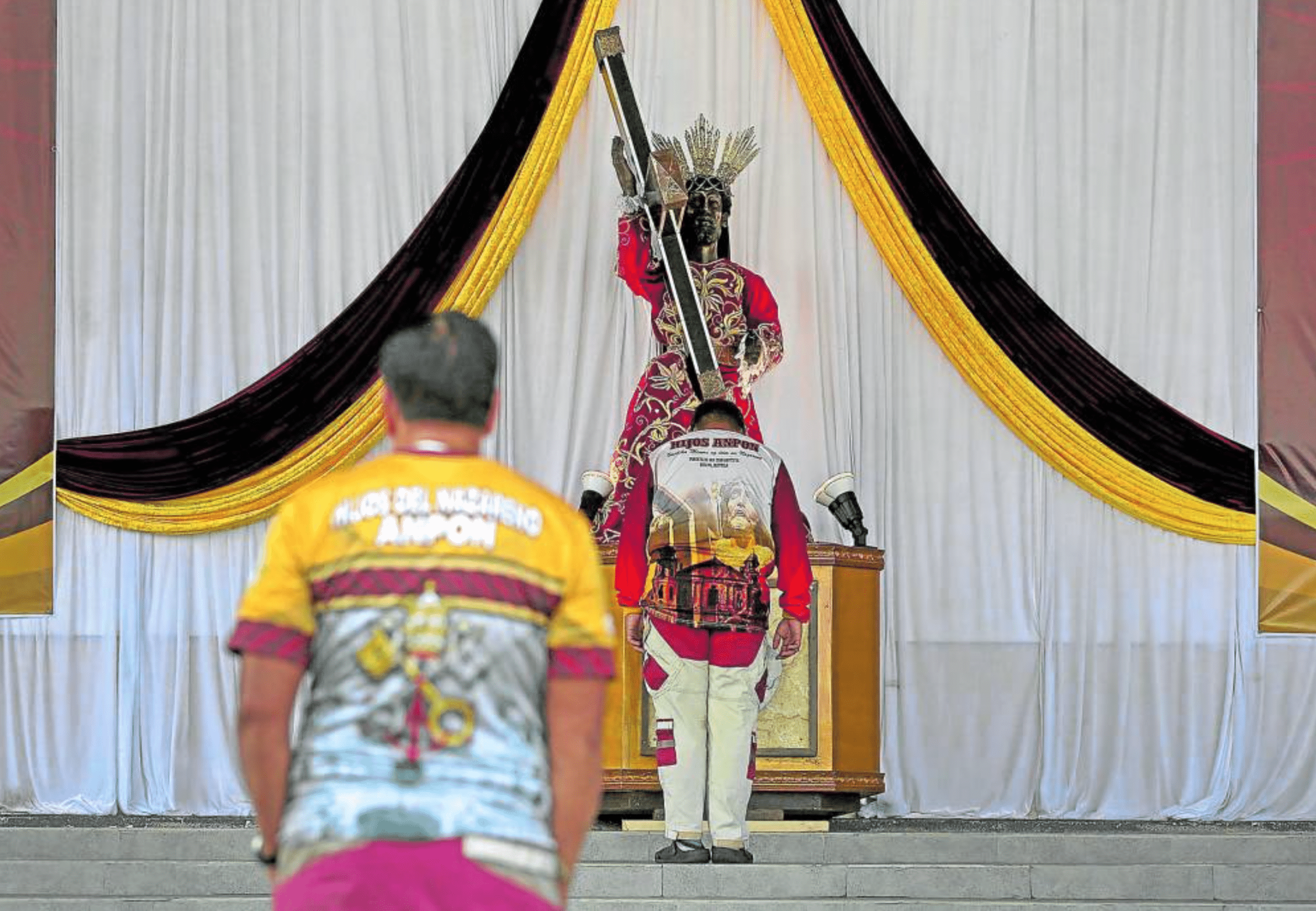
FILE PHOTO: The Jesus Nazareno (Black Nazarene) is brought to Quirino Grandstand in Manila on Saturday, January 6, 2024, for the “Pahalik,” which allows devotees to approach and touch, or dab hankies on the statue, ahead of the massive Jan. 9 procession known as “Traslacion.” – The traditional “Pahalik” for Nazareno 2025 started ahead of schedule on Monday night, January 6, 2025, as devotees began massing and lining up at the Quirino Grandstand. INQUIRER / RICHARD A. REYES
MANILA, Philippines — The traditional “Pahalik” that has been part of the annual Feast of Jesus Nazareno started ahead of schedule this year as devotees began massing and lining up at the Quirino Grandstand.
The Manila Police District (MPD) said church authorities officially opened the religious activity that involved the touching and kissing of a Jesus Nazareno image at 8:05 p.m. on Monday, even if it was supposed to only start by midnight Tuesday.
A Mass for the “Nazareno 2025” volunteers and staff preceded the Pahalik.
Quiapo Church communications coordinator Silgen Cabrito told reporters in a Viber group on Monday night that they would start the celebration early “in case there are already devotees forming a line” after the Mass.
READ: Hard questions about Nazareno 2025
The MPD said around 300 people queued in the first hour upon opening the Pahalik and that the crowd swelled to approximately 600 people before dawn.
READ: Nazarene feast: What devotees need to know for Traslacion 2025
The Pahalik will last until the Traslacion, or the procession of the Jesus Nazareno image, begins on Thursday, Jan. 9.
This annual procession is a reenactment of the 1787 Traslacion – which literally means “solemn transfer” – of the Jesus Nazareno image from its original shrine in Bagumbayan, the present Rizal Park, to the Quiapo Church.
In 2024, the Traslacion had 6.5 million devotees participating, according to the Quiapo Church Command Post.
The original statue of the Jesus Nazareno was carved from mesquite wood by an unknown sculptor. It arrived in Manila from Mexico on May 31, 1606.
The Jesus Nazareno statue, believed by millions of faithful to be miraculous, was partially destroyed in 1945 during the battle for Manila in the Second World War. A replica, which was made by renowned saint carver Gener Manlaqui, used the original head of the figure.